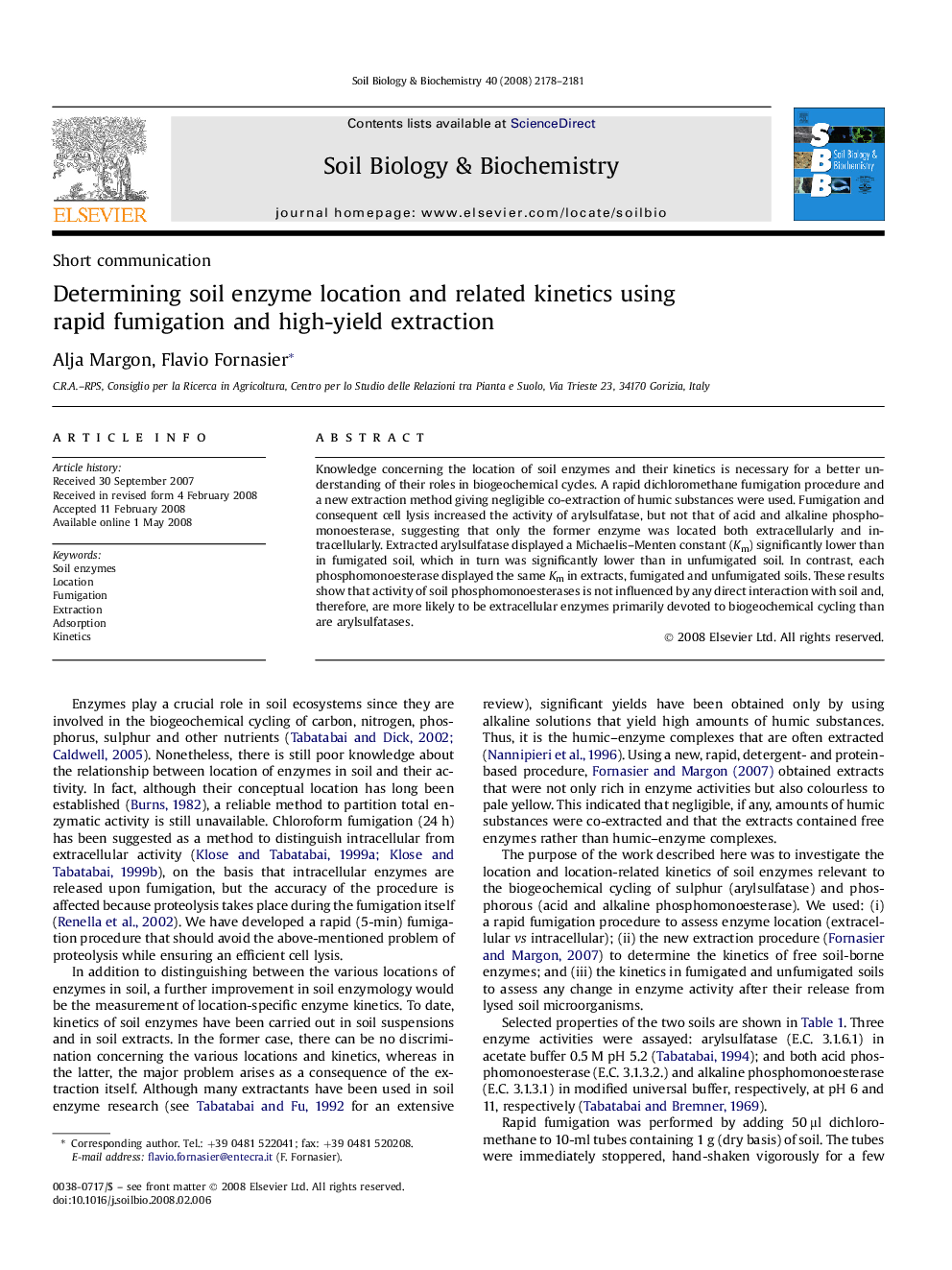| کد مقاله | کد نشریه | سال انتشار | مقاله انگلیسی | نسخه تمام متن |
|---|---|---|---|---|
| 2026876 | 1070054 | 2008 | 4 صفحه PDF | دانلود رایگان |

Knowledge concerning the location of soil enzymes and their kinetics is necessary for a better understanding of their roles in biogeochemical cycles. A rapid dichloromethane fumigation procedure and a new extraction method giving negligible co-extraction of humic substances were used. Fumigation and consequent cell lysis increased the activity of arylsulfatase, but not that of acid and alkaline phosphomonoesterase, suggesting that only the former enzyme was located both extracellularly and intracellularly. Extracted arylsulfatase displayed a Michaelis–Menten constant (Km) significantly lower than in fumigated soil, which in turn was significantly lower than in unfumigated soil. In contrast, each phosphomonoesterase displayed the same Km in extracts, fumigated and unfumigated soils. These results show that activity of soil phosphomonoesterases is not influenced by any direct interaction with soil and, therefore, are more likely to be extracellular enzymes primarily devoted to biogeochemical cycling than are arylsulfatases.
Journal: Soil Biology and Biochemistry - Volume 40, Issue 9, September 2008, Pages 2178–2181